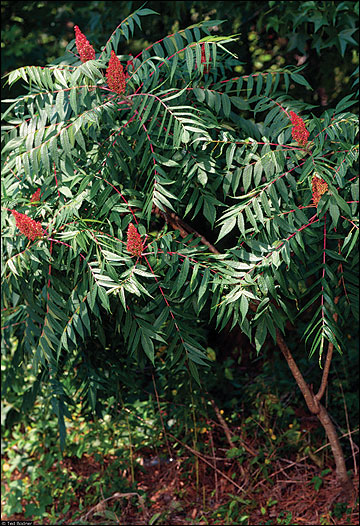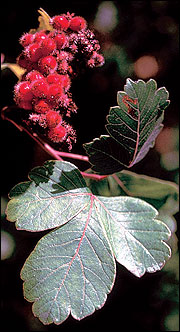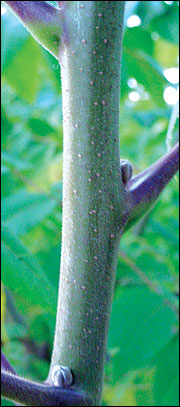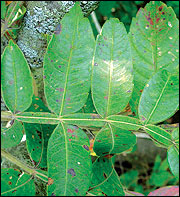Sumacs
- Rhus spp.
- Shumac
Woody
In smooth sumac, pinnately compound leaves offer summer thermal cover, while dense clusters of red hairy fruits provide food.
©Ted Bodner, USDA-NRCS Plants Database
Description
Four species of sumac occur commonly in the Midwest, often growing as thicket-forming shrubs, but occasionally up to 20 feet tall.
Sumacs can grow in a variety of Midwest soil types and occur in most habitat communities, including prairies, old fields, pastures and open woodlands. Winged, smooth and staghorn sumac have single stems and a broad reaching canopy of pinnately compound leaves. Fragrant sumac, which produces an aromatic odor when crushed, has three leaves resembling poison ivy but with more serrated margins. The leaves of all species often turn a brilliant red in autumn. Fruits are red and persist well through winter and into early spring. Smooth sumac tends to be invasive in pastures and hayfields. Fragrant sumac is the best of the four for quail habitat plantings.
Use by bobwhites
The primary benefit of sumacs to bobwhites is the summer thermal cover they provide. The branches do not interlace extensively and therefore provide little if any winter cover. The lack of a dense canopy often allows fescue or brome to grow in the understory as well, negating its value as woody cover. While not especially energy rich, seeds are commonly consumed by quail. The fruits can become important to bobwhite survival during periods of deep snow or ice in the late winter when other food items have become depleted or are otherwise unavailable.






